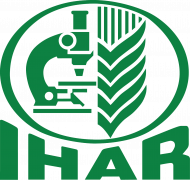Abstract
Most potato growers apply phosphorus (P) before cultivation and there is little information available about P fertigation for drip-irrigated potato. A field experiment was conducted during 2017 and 2018 to study the effect of P fertigation on P uptake and yield of potato (Solanum tuberosum L.) grown on a calcareous sandy soil. Three frequencies of P fertigation (daily, every 2 days and every 3 days) and two forms of P (urea phosphate (UP) and monopotassium phosphate (MPP)) were examined. UP reduced the soil pH by 7.2% and increased the P availability by 24% compared to MPP. Daily P fertigation increased P concentrations in the petioles of potato by 19–47% compared to the application every 3 days. Water and P were used more efficiently under daily P fertigation treatments and the use of acidic fertiliser (UP) was more efficient in this respect. The injection of UP with irrigation water every day caused a 22% increase in the marketable yield of potato compared to the injection of MPP every 3 days. It can be recommended that for potato grown on sandy calcareous soils, UP must be added daily to obtain high economic return and minimise the negative environmental effects of unsustainably high P rates.















